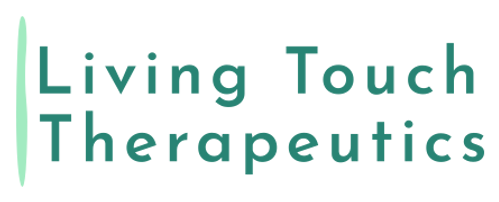Ankle and Heel Pain? These Muscles Could Be To Blame
- Benjamin Mishleau
- Mar 3
- 4 min read
Maybe it’s been nagging you for months, or perhaps it just started this morning. Whatever the case, ankle pain can be frustrating and disruptive, making you wonder: What’s wrong? While conditions like tendinopathy or acute injuries are common culprits, there’s another often-overlooked factor that could be causing or contributing to your discomfort—trigger points in overused muscles.
Much of the information in this article is inspired by Myofascial Pain and Dysfunction: The Trigger Point Therapy Manual by Dr. Janet G. Travell and Dr. David G. Simons. This comprehensive two-volume set revolutionized my approach to massage, helping me provide lasting relief to my clients. If you're looking for a more accessible, hands-on resource, I highly recommend The Trigger Point Therapy Workbook by Clair Davies, NCTMB, which breaks down the concepts into an easy-to-follow, self-treatment guide.
When a muscle is overused—held in a tight or constricted state for too long—it becomes fatigued and tense, much like you might feel after a stressful, overbooked week. Over time, the muscle can lock into this tight position, forming painful knots known as trigger points. These knots don’t just cause localized pain; they can pull on surrounding muscles, restrict movement, and even contribute to ankle dysfunction.
In this article, we’ll explore the key muscles that may be behind your ankle pain and what you can do to relieve it.
Muscles That Can Create Ankle Pain
Now that we've explored how muscles can contribute to or even cause ankle pain, let's take a closer look at the specific muscles that may be responsible. While there's much more to say about each one, I've highlighted the key points that you should know. If any of these symptoms sound familiar, be sure to check out the section below on what you can do to find relief.
Tibialis Anterior
This muscle attaches to the top of the tibia and along its upper half, then descends parallel to the sharp edge of the shinbone. Its main function is to flex the foot upward and turn the bottom of the foot inward.
Symptoms It Can Cause:
Pain in the front of the ankle, often feels like it is in the actual joint
Balance problems (falling over your own feet)
Pain in the top and inner side of the big toe
How It Can Be Overused:
Strenuous running, walking, or climbing
Walking on rough or uneven ground
Peroneus Muscles
These three muscles—the peroneus longus, peroneus tertius, and peroneus brevis—are located on the outer side of the lower leg, running along the fibula. Their primary function is to turn the foot outward and the ankle inward.
Symptoms They Can Cause:
Pain in the outer side of the ankle
Pain in the outer front of the ankle bone
Ankle Weakness
How They Can Be Overused:
Excessive walking, running, and climbing
Sleeping on your stomach
Wearing high-heels or tight socks
Sitting with crossed legs
Calf Muscles
The two main muscles of the calf are the gastrocnemius and the soleus. Together, they generate the primary force needed for lifting the body to stand and for propelling it forward while walking or running.
Symptoms They Can Cause:
Pain in the inner ankle
Pain in the back of the ankle
Pain in the arch of the foot
How They Can Be Overused:
Climbing, walking uphill, or bike riding
Leaning forward while standing for extended periods of time
Sitting in a chair that puts pressure on the back of the legs
Poor shoes
Aerobic dancing
Tibialis Posterior
This muscle lies beneath the calf muscles, positioned between the tibia and fibula bones. It attaches to the bones, and its tendon extends downward, wrapping around the inner side of the heel and connecting to several bones in the middle of the foot's arch. Its primary function is to flex the foot downward and ensure proper weight distribution along the outer edge of the foot.
Symptoms It Can Cause:
Fallen arches
Pain in the Achilles tendon
How It Can Be Overused:
Walking or running on rough, uneven ground
Poor shoes
How Do We Fix Triggered Muscles?
The good news is that triggered muscles can often be relatively quick and easy to "un-trigger." However, if you continue the activity that caused the issue in the first place, the muscle will likely become triggered again. Consider how you can modify or mediate these triggers—for example, running on smoother surfaces or less extensively. For activities that cannot be changed, consistently applying the following two steps can help keep your pain significantly reduced.
Step 1: Relax the Muscle
The first step in releasing a triggered muscle is to relax it. Whether through foam rolling your legs, self-massage with tennis balls or your hands, or seeking the help of a professional massage therapist, massage is the most effective way to ease muscle tension and restore movement. If you're interested in learning more about self-massage, I highly recommend The Trigger Point Therapy Workbook by Clair Davies, NCTMB.
Step 2: Strengthen and Stabilize
Relaxing the muscle alone is not enough. The reason it became overworked in the first place is often due to weakness—either in the muscle itself or in surrounding muscles that failed to provide adequate support. Developing a targeted corrective exercise routine to strengthen and stabilize your legs, ankles, and feet is essential for long-term relief. These exercises don’t require a gym and usually take just a few minutes each day, but the benefits will be well worth the effort!
If you are currently dealing with ankle pain, schedule a consult with me today to see how we can work together to help you feel and move better!





Comments